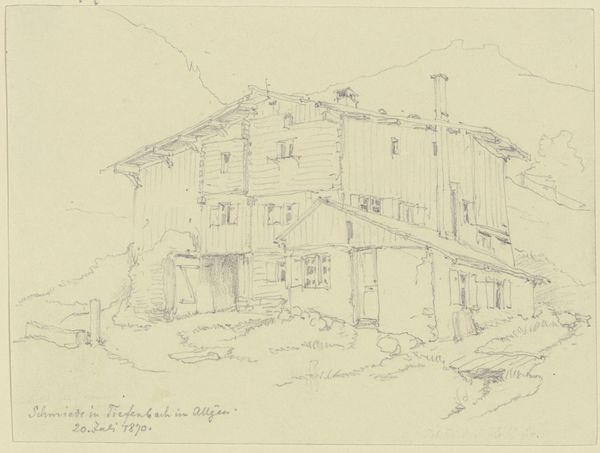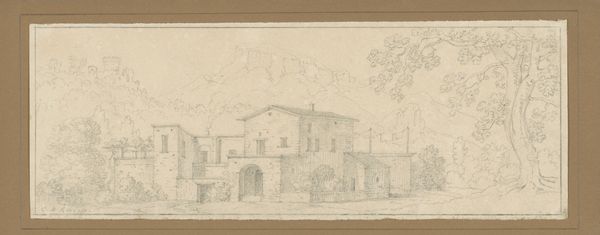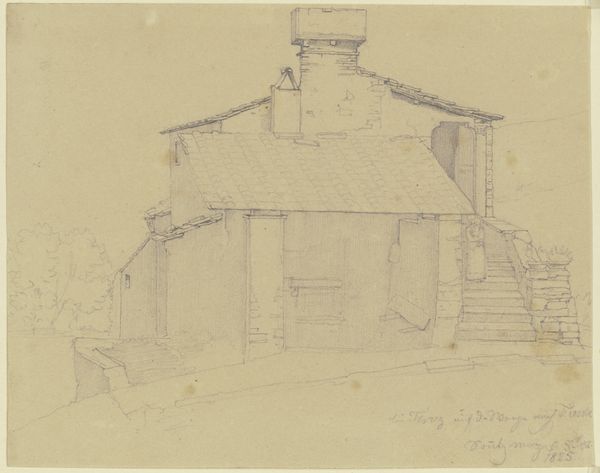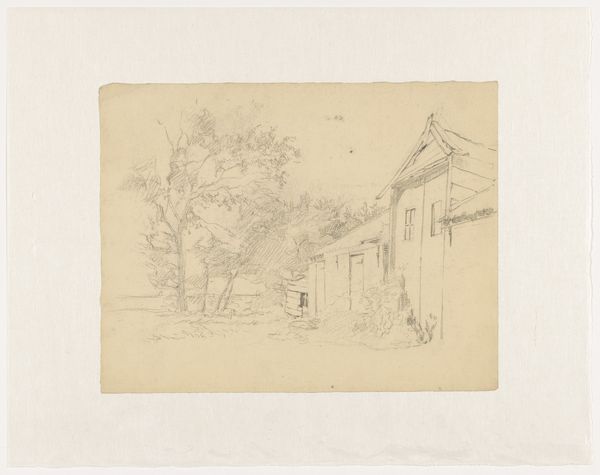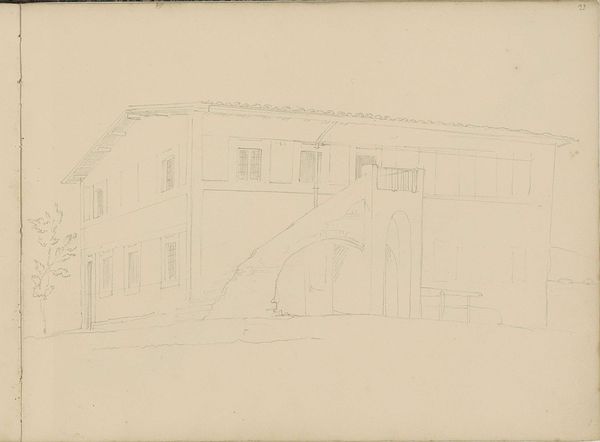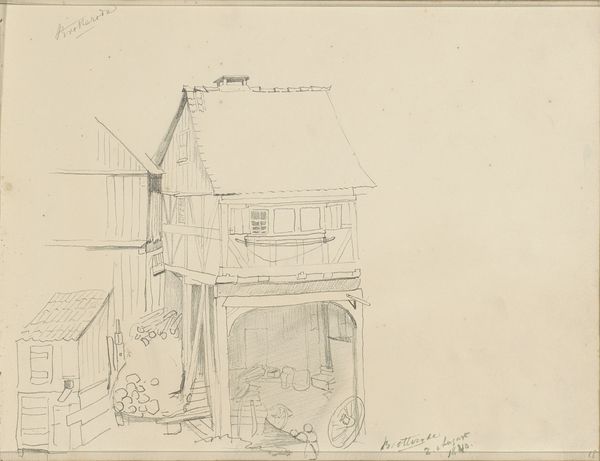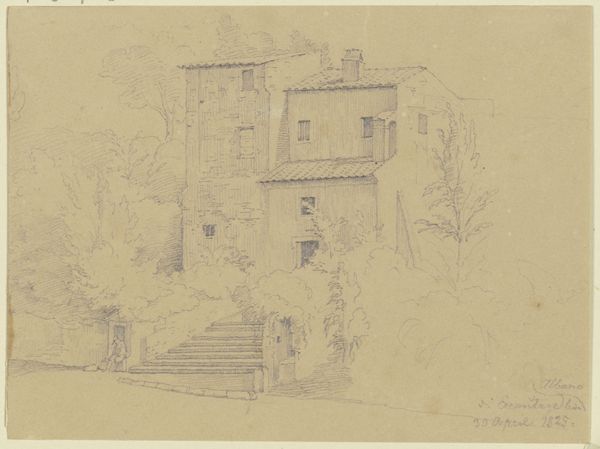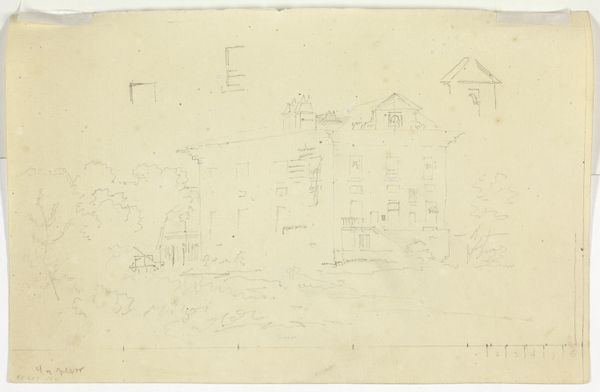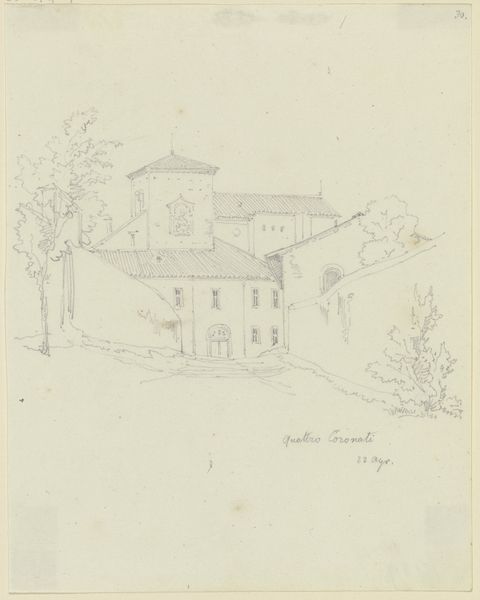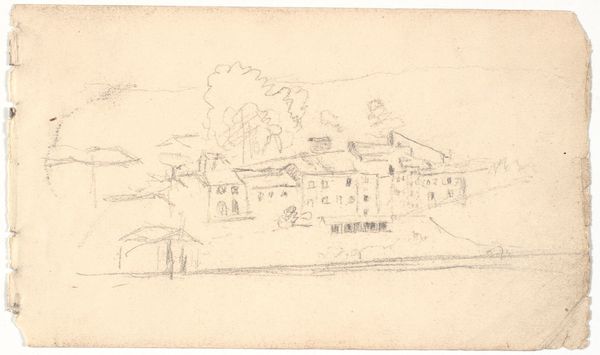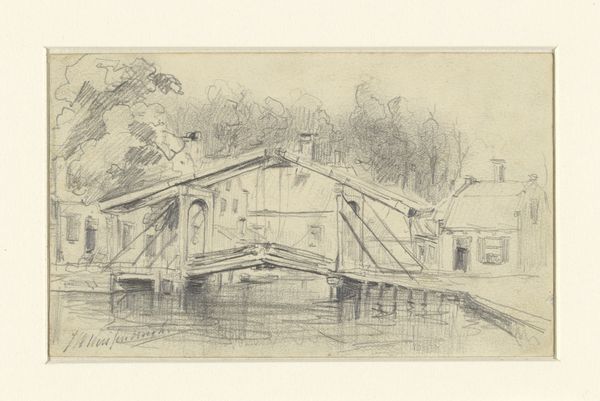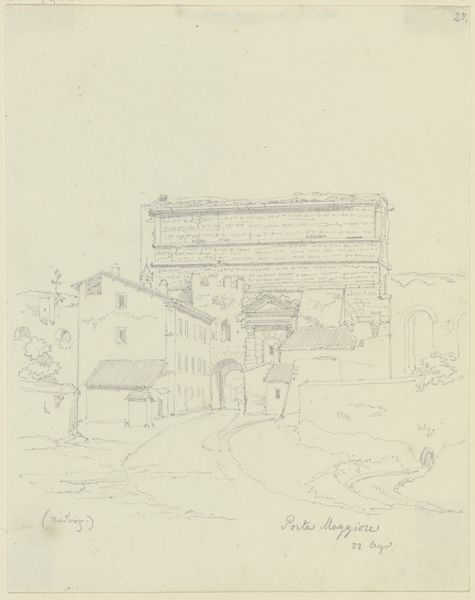
Copyright: Public Domain
Curator: This drawing is by Nikolaus Hoff. It's entitled "Wirtshaus in Ennsdorf bei Linz," dating from 1822. It’s rendered in pencil on paper and currently resides here at the Städel Museum. Editor: Hmm, austere, yet somehow welcoming. The sketch-like quality gives it this feeling of being very grounded and real. Like you're actually standing there, dusty boots and all. Curator: Hoff's architectural drawings weren't mere documentation. Consider the time—the Romantic era! He used these rural scenes, like this inn in Ennsdorf, to comment on shifts in Central European social structures and the emergence of the rural folk as their own distinct community. Editor: You know, the detail he captured, despite it just being pencil on paper... it really gets the texture across. You can almost feel the rough plaster of the walls and hear the creak of that hay-filled wagon. The drawing has got this dreamlike memory thing going on. Curator: Right. It seems Hoff intentionally contrasts a rough realism, or material culture that you described, with a sentimental interpretation of landscape... creating both the romantic idyll, and documentary image for future political-historical study. These taverns became potent spaces for political discourse away from state-sponsored institutions, if only for an evening! Editor: So, more than just a charming building, this inn would have served as this keyhole into society at large. Look how much of the structure Hoff rendered, like he was trying to inventory all the unique traits. The ladder just propped against the trough. The roof ornament! Love how the architecture tells this deeper story. Curator: Precisely! These everyday scenes are historical artifacts in their own right. Hoff recognized and leveraged the potency in preserving this changing world for us today. Editor: And it’s this artist’s skill, to see beyond the ordinary and capture the fleeting atmosphere of the moment, a feeling—that endures long past when the wagon last carried a load of hay. Curator: Thanks to artists such as Hoff, who recognized the potent stories held in architecture, these remnants can carry powerful insight, to our own historical interpretations. Editor: Right. It is this unique fusion of observation and feeling that makes the work a pleasure for us all to come back and re-visit.
Comments
No comments
Be the first to comment and join the conversation on the ultimate creative platform.
